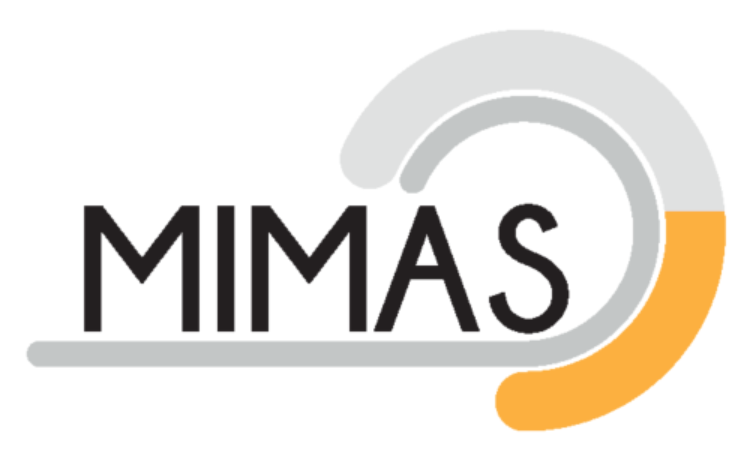CoSimPy
Python electromagnetic cosimulation library
Project maintained by umbertozanovello Hosted on GitHub Pages — Theme by mattgraham
CoSimPy is an open source Pyhton library optimised for Magnetic Resonance Imaging (MRI) Radiofrequency (RF) Coil design. The library aims to combine results from electromagnetic (EM) simulations with circuit analysis through a cosimulation environment.
Summary
- News & Versions
- Getting Started
- Deployment
- Full Documentation
- Test
- License
- Related Publications
- Acknowledgments
News & Versions
You can read about CoSimPy news and version hystory here
Getting Started
The library has been developed with Python 3.7. and tested on previous versions down to Python 3.5.
Prerequisites
The library uses the following additional packages:
- numpy (>=1.15.2)
- matplotlib (>=3.4.0)
- h5py (>=2.8.0)
- scipy (>=1.1.0)
The package versions reported in brackets represent the oldest releases with which the library has been succesfully tested.
Installing
With pip (https://pypi.org/project/cosimpy/):
pip install cosimpy
With anaconda:
conda install --channel umbertopy cosimpy
Deployment
After installation, the library can be imported as:
import cosimpy
An Example
In the following example, a 1-port RF coil is modeled as a 5 ohm resistance in series with a 300 nH inductance. The RF coil is supposed to generate a 0.1 μT magnetic flux density oriented along the y-direction when it is supplied with 1 W incident power at 128 MHz. The coil is connected to a tuning/matching network through a 5 cm long lossless transmission line. The network is designed to transform the impedance at its output to 50 ohm at 128 MHz.
import numpy as np
import cosimpy
L_coil = 300e-9 #Coil inductance
R_coil = 5 #Coil resistance
#Frequency values at which the S parameters are evaluated
frequencies = np.linspace(50e6,250e6,1001)
#Number of points along x-, y-, z-direction where the magnetic flux density is evaluated
nPoints = [20,20,20]
#b_field is evaluated at one frequency (128 MHz) at one port
b_field = np.zeros((1,1,3,np.prod(nPoints)))
#Only the y-component is different from zero
b_field[:,:,1,:] = 0.1e-6
#S_Matrix instance to be associated with the RF coil instance
s_coil = cosimpy.S_Matrix.sMatrixRLseries(R_coil,L_coil,frequencies)
#EM_Field instance defined at 128 MHz to be associated with the RF coil instance
em_coil = cosimpy.EM_Field([128e6], nPoints, b_field)
#RF_Coil instance
rf_coil = cosimpy.RF_Coil(s_coil,em_coil)
#The average value of the y-component of the magnetic flux density
np.average(np.abs(rf_coil.em_field.b_field[0,0,1,:])).round(10)
'''
Out:
1e-07
'''
#5 cm, 50 ohm lossless transmission line
tr_line = cosimpy.S_Matrix.sMatrixTrLine(5e-2,frequencies)
#Connection between the RF coil and the transmission line
rf_coil_line = rf_coil.singlePortConnRFcoil([tr_line],True)
#To design the tuning/matching network, I need to know the impedance value at 128 MHz
rf_coil_line.s_matrix[128e6].getZMatrix()
'''
Out:
array([[[41.66705459+708.46385311j]]])
'''
#The impedance can be transformed to 50 ohm at 128 MHz deploying a T-network made of two capacitors and one inductor with the following values:
Ca = 1.87e-12 #farad
Cb = 27.24e-12 #farad
L = 56.75e-9 #henry
#I create the S_Matrix instances associated with Ca, Cb and L
S_Ca = cosimpy.S_Matrix.sMatrixRCseries(0,Ca,frequencies)
S_Cb = cosimpy.S_Matrix.sMatrixRCseries(0,Cb,frequencies)
S_L = cosimpy.S_Matrix.sMatrixRLseries(0,L,frequencies)
#I create the S_Matrix instance of the tuning/matching network.
tun_match_network = cosimpy.S_Matrix.sMatrixTnetwork(S_Ca,S_L,S_Cb)
#The RF coil is connected to the matching network. The capacitor Ca will be in series with the transmission line
rf_coil_line_matched = rf_coil_line.singlePortConnRFcoil([tun_match_network], True)
#The average value of the y-component of the magnetic flux density
np.average(np.abs(rf_coil_line_matched.em_field.b_field[0,0,1,:])).round(10)
'''
Out:
7.825e-07
'''
rf_coil_line_matched.s_matrix.plotS(["S1-1"])

Full Documentation
A more detailed documentation of CoSimPy is available here
Test
For testing the library, pytest is required.
After installing CoSimPy, download the “test” folder and, from a terminal execute:
cd path_to_test_folder/test
pytest -v
Different tests can be enabled/disabled through the relevant boolean flags in test_develop.py
Slower tests can be skipped adding the –runfast option in the terminal
To test the library under different Operating Systems and/or Python versions, tox can be exploited. Just download the whole CoSimPy distribution and, from a terminal, execute:
cd cosimpy_folder
tox -vr
where cosimpy_folder is the folder containing the tox.ini file
License
This project is licensed under the MIT License - see the LICENSE file for details.
Related Publications
U. Zanovello et al., “CoSimPy: an Open-Source Python Library for MRI Radiofrequency Coil EM/Circuit Cosimulation”, Computer Methods and Programs in Biomedicine 2022, 106684, https://doi.org/10.1016/j.cmpb.2022.106684
Acknowledgments
The library has been developed in the framework of the Researcher Mobility Grant (RMG) associated with the european project 17IND01 MIMAS. This RMG: 17IND01-RMG1 MIMAS has received funding from the EMPIR programme co-financed by the Participating States and from the European Union’s Horizon 2020 research and innovation programme.
Maintenance of CoSimPy is made possible thanks to funds coming from the EPM STASIS project 21NRM05. The project (21NRM05 STASIS) has received funding from the European Partnership on Metrology, co-financed from the European Union’s Horizon Europe Research and Innovation Programme and by the Participating States.


